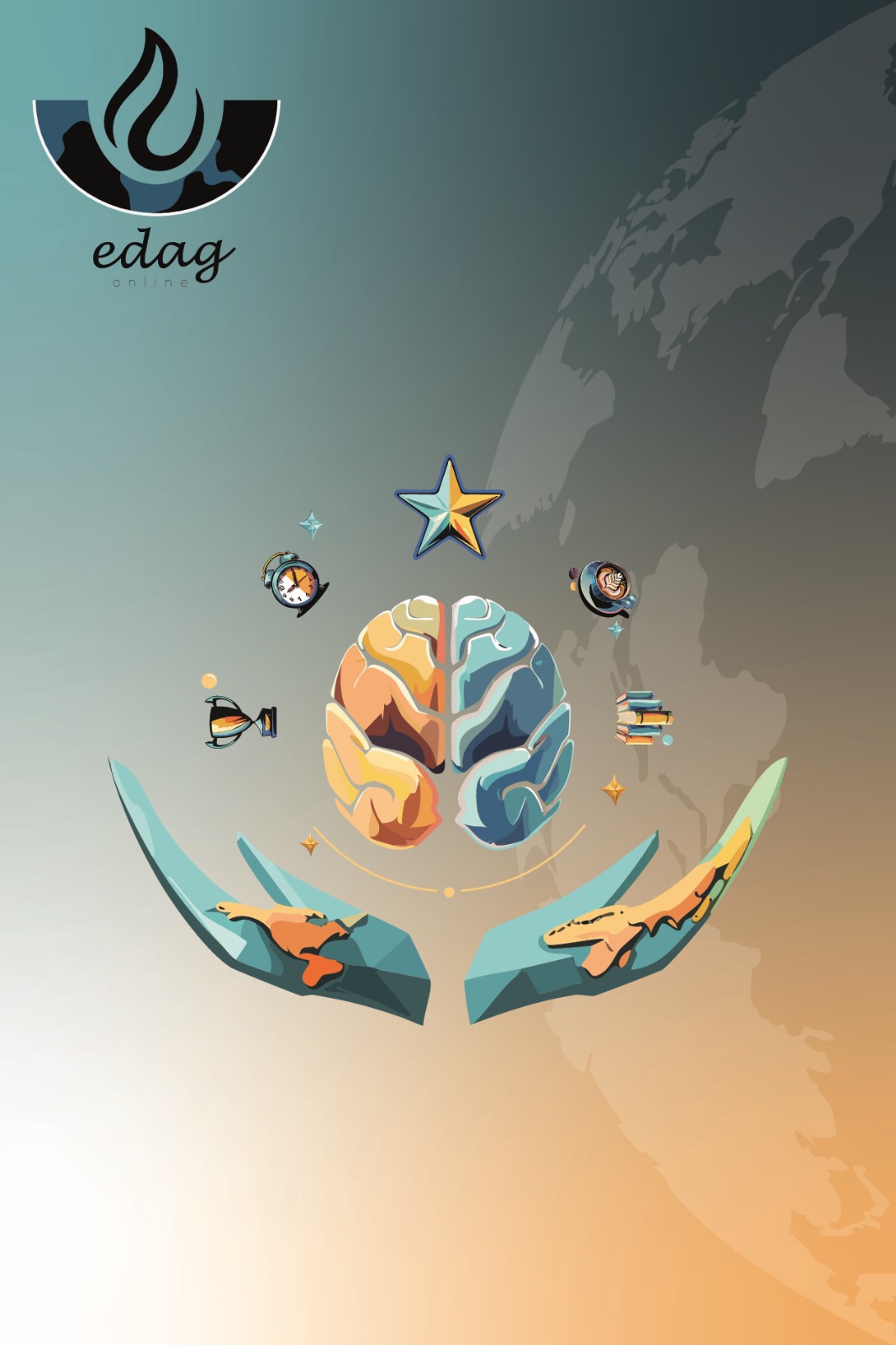Körsağırlığı Anlamak
DOI:
https://doi.org/10.5281/zenodo.15349364Keywords:
Deafblindness, dual sensory impairment, dual sensory loss, effect of deafblindness, communicationAbstract
Individuals who are deafblind experience varying degrees of both visual and hearing impairments. The term deafblind has been referred to by various other terms over the years, such as dual sensory loss, dual sensory impairment, multiple sensory loss, and deaf-blindness. The fact that these individuals are simultaneously affected by the loss of both senses leads to needs that differ from those of individuals with only visual or only hearing impairments. Each deafblind individual is affected by visual and hearing losses to different extents, and these losses may occur either congenitally or acquired. This situation makes it essential to understand how effect to people with deafblind, particularly in order to identify their communication needs and to develop appropriate intervention plans. Although the prevalence of deafblindness is lower compared to other disabilities, understanding the needs of these individuals and ensuring that they can lead a quality life, like everyone else, is of great importance. Recognizing the limitations caused by the loss of such critical senses, as well as the needs that arise in both daily life and educational settings, is a prerequisite for effectively planning the special services and support to be provided. Therefore, this study aims to the definition of deafblindness, highlight its effects on individuals, and the educational and communication needs of deafblind individuals, based on the existing literature, and to offer recommendations regarding the necessary adjustments in the field of education.
References
Caporusso, N., Trizio, M., & Perrone, G. (2014). Pervasive assistive technology for the deaf-blind: Need, emergency and assistance through the sense of touch. In M. M. Gaber (Ed.), Pervasive health (pp. 289–316). Springer. https://doi.org/10.1007/978-1-4471-6413-5_12
Crook, C., Miles, B., & Riggio, M. (1999). Communication Methods Used with Individuals Who Are Deafblind. National Center on Deaf-Blindness.
Cushman, C. (2020). Object communication and calendar systems. Paths to Literacy. https://www.pathstoliteracy.org/object-communication-and-calendar-systems/
Çakmak, S. (Ed.). (2018). Özel eğitimde yardımcı teknolojiler. Vize Akademik Yayınları.
Dammeyer, J. (2011). Mental and behavioral disorders among people with congenital deafblindness. Research in Developmental Disabilities, 32(2), 571–575. http://dx.doi.org/10.1016/j.ridd.2010.12.019
Dammeyer, J. (2014). Deafblindness: A review of the literature. Scandinavian Journal of Public Health, 42, 554–562. https://doi.org/10.1177/1403494814544399
Dammeyer, J. (2015). Deafblindness and dual sensory loss research: Current status and future directions. World Journal of Otorhinolaryngology, 5, 37–40. https://doi.org/10.5319/wjo.v5.i2.37
Edwards, T. (2014). From compensation to integration: Effects of the pro-tactile movement on the sub lexical structure of Tactile American Sign Language. Journal of Pragmatics, 69, 22–41. https://doi.org/10.1016/j.pragma.2014.05.005
Hersh, M. (2013). Deafblind people, communication, independence, and isolation. Journal of Deaf Studies and Deaf Education, 18(4), 446–463.
Hoevenaars‐van den Boom, M. A. A., Antonissen, A. C. F. M., Knoors, H., & Vervloed, M. P. J. (2009). Differentiating characteristics of deafblindness and autism in people with congenital deafblindness and profound intellectual disability. Journal of Intellectual Disability Research, 53(6), 548–558.
Igba, I. U., & Nanjwan, J. D. (2018). Emergent Braille literacy and communication skills for children with congenital visual impairment. Special Needs Education, 4, 101–107.
Jaiswal, A., Aldersey, H., Wittich, W., Mirza, M., & Finlayson, M. (2018). Participation experiences of people with deafblindness or dual sensory loss: A scoping review of global deafblind literature. PloS One, 13(9), e0203772.
McLetchie, B. A., & Riggio, M. (1997). Competencies for teachers of learners who are deafblind: Perkins National Deafblind Training Project.
Meekins-Doherty, L., Prain, M., Maxwell, G. E., Silveira, S., & Shepard, E. (2025). Exploring methodologies for establishing prevalence of deafblindness in children: A scoping review. British Journal of Visual Impairment, 43(1), 120–142.
Miles, B. (1998). Overview on deaf-blindness. DB-LINK Fact Sheet. Revised. ED436056.pdf
Miles, B., & Riggio, M. (1999). Remarkable conversation: A guide to developing meaningful communication with children and young adults who are deafblind. Watertown, MA: Perkins School for the Blind.
Nicholas, J. (2020). Cognitive assessment of children who are deafblind: Perspectives and suggestions for assessments. Frontiers in Psychology, 11, 571358. https://doi.org/10.3389/fpsyg.2020.571358
Nordic Leadership Forum on Deafblindness. (2024). Nordic definition on deafblindness. Nordic Welfare Centre. https://doi.org/10.52746/SIMH2921
Obretenova, S., Halko, M. A., Plow, E. B., Pascual-Leone, A., & Merabet, L. B. (2010). Neuroplasticity associated with tactile language communication in a deaf-blind subject. Frontiers in Human Neuroscience, 3, 953.
Olayi, J. E., Igba, I. U., & Ewa, J. A. (2023). Communication strategies for teaching deafblind learners in an inclusive classroom. Special Needs Education from the Lens of Interdisciplinary Dialogue: A Festschrift in Honour of Prof. Emeka D. Ozoji, 1(1). https://journals.ezenwaohaetorc.org/index.php/AFHOPEO/article/view/2432
Şafak, P. (2017). Görenler için Braille (kabartma) yazı rehberi (1. baskı). Pegem Akademi Yayıncılık.
Şafak, P. (2018). Ağır ve çoklu yetersizliği olan çocukların eğitimleri ve bağımsızlığa ulaşması için desteklenmesi. Vize Yayıncılık.
Smith, T. M., Nichols, S. L., Issekutz, K., & Blake, K. (2005). Behavioral profiles and symptoms of autism in CHARGE syndrome: Preliminary Canadian epidemiological data. American Journal of Medical Genetics, 133A, 248–256.
Türkiye İstatistik Kurumu. (2002). Türkiye Engelliler Araştırması. TÜİK Veri Portalı. https://data.tuik.gov.tr/Kategori/GetKategori?p=Saglik-ve-Sosyal-Koruma-101
Türkiye İstatistik Kurumu. (2010). Engelli Sorun ve Beklentileri Araştırması. TÜİK Veri Portalı. https://data.tuik.gov.tr/Kategori/GetKategori?p=Saglik-ve-Sosyal-Koruma-101
Türkiye İstatistik Kurumu. (2023). İstatistiklerle Çocuk. https://data.tuik.gov.tr/Bulten/Index?p=Istatistiklerle-Cocuk-2023-53679
Watharow, A., & Wayland, S. (2024). Different ways of being, doing and telling in qualitative research: Lessons from d/Deafblind studies. International Journal of Qualitative Methods, 23, 16094069241244864.
WFDB. (2023). Küresel Raporu 2023 [İnternet]. https://wfdb.eu/wfdb-report-2022/
WFDB. (2025). What is deafblindness? – WFDB. https://wfdb.eu/what-is-deafblindness/
Wittich, W., Southall, K., Sikora, L., Watanabe, D. H., & Gagné, J. P. (2020). Assistive Technology to Promote Communication and Social Interaction for People With Deafblindness: A Systematic Review. Frontiers in Education, 5, 578389. https://doi.org/10.3389/feduc.2020.578389
Wittich, W., & Dumassais, S. (2025). The WHO ICF comprehensive core set for deafblindness: A narrative overview of the development process. British Journal of Visual Impairment, 02646196251320351.
Downloads
Published
How to Cite
Issue
Section
License
Copyright (c) 2025 M. Emin KALAYLI , Pınar ŞAFAK

This work is licensed under a Creative Commons Attribution 4.0 International License.



